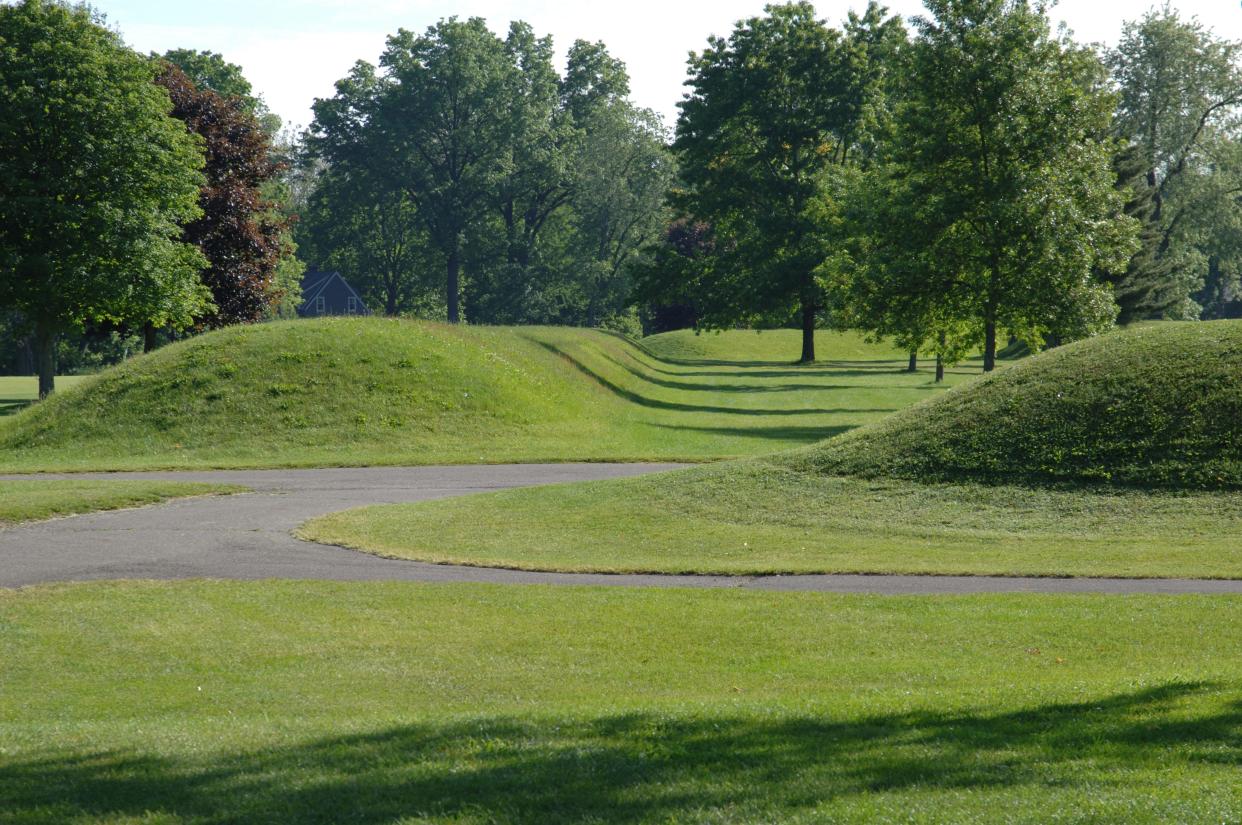Gill: Moving earth across the landscape at the Newark Earthworks

One challenge we have in doing what’s called “interpretation” of the Newark Earthworks are the assumptions, and even misconceptions many visitors bring to the sites.
Interpretation is the kind of non-formal education that park rangers and tour guides do. Interpretation isn’t education in that there’s not a set outcome in mind, of grades or credits or course participation scores. You participate for a very different set of motivations: social, family, personal reasons for taking a trip, spending some of your leisure at a place where you can learn or just relax and pick up a different point of view.
Obviously education and interpretation have a fair amount of overlap in terms of tools and techniques, but the biggest difference is that your visitors can walk away at any time. Students in school usually don’t have that option. So a good interpreter knows they can’t just lecture, shouldn’t try to be merely entertaining, but there’s a tricky balance to maintain.
This is why it’s hard to deal with mistaken assumptions. If someone voluntarily comes and joins in an interpretive program or takes a guided walk, and says “but we know aliens built all of this, right?” we might be a little argumentative. What you don’t always know is exactly what your visitors are assuming, and how that’s shaping the way they hear what you’re telling them.
There are words, for that reason, we avoid. “Savage” I hope we all understand is an inaccurate as well as unhelpful term; “primitive” is right up there from my point of view. Some visitors do start from an assumption that if you don’t have written records, or metal alloys, or gunpowder, you’re not a civilization, but they’d be quite mistaken.
In fact, one of the archaeological and anthropological marvels around the Newark Earthworks scholarship we’ve done thus far, is how we see not only the engineering precision built into this four and a half square mile complex of geometric earthworks, but the social complexity we’re only just starting to come to understand.
Briefly put, there are major civil engineering projects in ancient history around the world, and in this hemisphere, of pyramids and monuments and causeways and roads, all of which took large numbers of workers. But almost without exception, the archaeological record shows in funerary remains and nutritional analysis of teeth and bones that there was some serious social stratification in those cultures. There were bosses, kings or priests or poobahs, who show less wear and tear on the bones and better food in their bellies. And there were workers, servants, even slaves, who lived notably less well.

Through the Middle Woodland period of the Ohio Valley, in the population archaeologists call the Hopewell Culture, we don’t find this. Slave labor, even significant social stratification, doesn’t appear in the archaeological record. This is significant.
Because to build earthen enclosures made up of literally millions of basket loads of soil and clays, sometimes brought from miles away, you need hundreds or more likely thousands of people voluntarily working together. Working hard, and apparently without coercion. This is quite a civilization, and I’d like to ease my visitors around to leaving behind their assumptions about early America, and call it an advanced civilization, in its own unique way.
Jeff Gill is a writer, storyteller, and preacher in central Ohio; he leads tours as a volunteer with the Newark Earthworks Center at Ohio State Newark and for the Ohio History Connection, and is a World Heritage Ambassador.
This article originally appeared on Newark Advocate: Gill: Moving earth across the landscape at the Newark Earthworks

